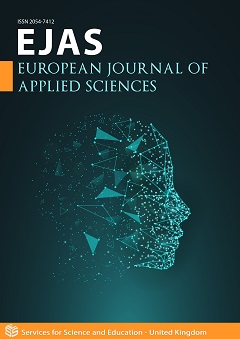Basic Principle of Simulation for Texture Formation of Both Face-Centered-Cubic Metals and Body-Centered-Cubic Ones Based on Rotational Symmetry
DOI:
https://doi.org/10.14738/aivp.103.12353Keywords:
Body-centered-cubic,Face-centered-cubic,Deformation,Texture,SymmetryAbstract
The principal axes of X[100], Y[010] and Z[001] are perpendicular to each other as the three orbits of and by a rotational symmetry of mathematical group theory in such way that component X is not related to Y or Z one another whichever. There is a conservation quantity in the symmetry i.e. the minimum total slip amount, M value in crystal by Taylor. Firstly, a method using a coincidence relation between those of direction cosine and synthesis of slip systems, and the strain tensor d in crystal lattice coordinates of X([100])-Y([010])-Z([001]) has been applied to seek eight slips dX1,dY1,dX2,dY2,dX3,dY3,dX4,dY4 which are essential for fcc and bcc. From the eight slips, in fcc metal, orientation at onset(minimum) of M value shows the cube {100}<001> and M value increases{100}<001> →{100}<016>→{100}<013>→{100}<012>→ {100}<023>→ {100}<0,9,11> named the cluster composed of cube and cube-family in fcc metal. In bcc metal, an intersection of two kinds of planes from the three ones composed of , and is chosen, and by the rotational symmetry of the principal axes of X[100], Y[010] and Z[001], 72 possible combinations of the five slips on planes based on Taylor’s formidable restriction rule of the five slips are calculated and this simulates properly lengthy of accumulated researcher’s experimental results such as the three stable orientations of bcc metal in rolling and
Downloads
Published
How to Cite
Issue
Section
License
Copyright (c) 2022 Hiroaki Masui

This work is licensed under a Creative Commons Attribution 4.0 International License.






